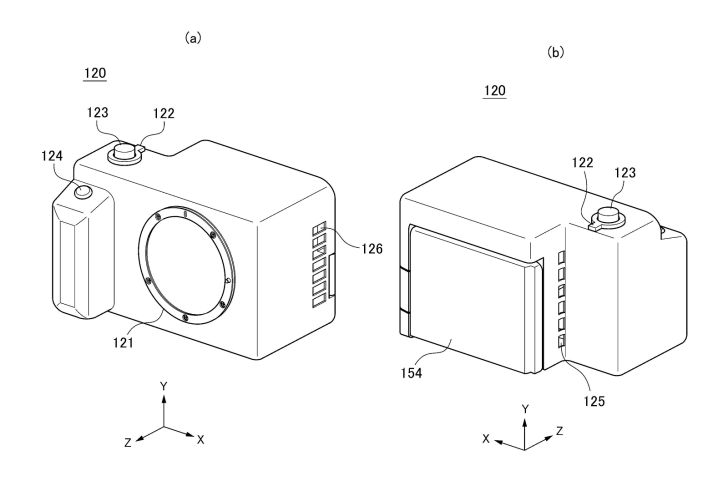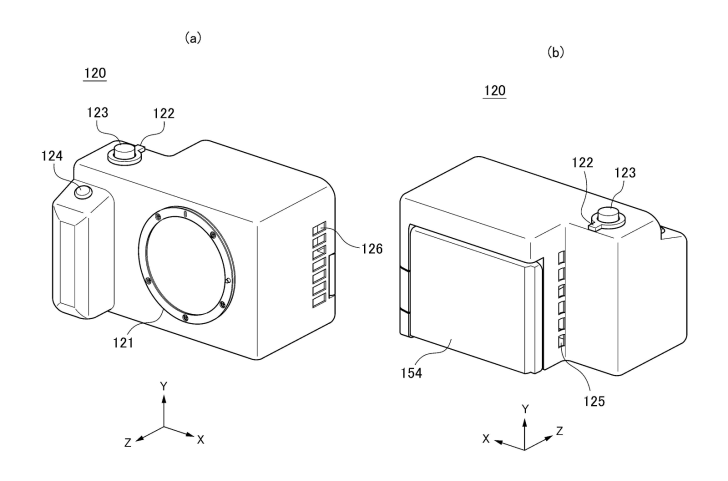
Canon is at it again with this form factor and finding more ways to combat the most obscure heat problems you can imagine. Why heat is an issue, is aptly described in this part of the patent application.
When a user takes a picture while holding a digital camera, image blur may occur in the photographed image due to camera shake or the like. One known method for reducing such image shake is to oscillate (translate or rotate) a unit that supports the image sensor within a plane approximately perpendicular to the imaging optical axis depending on the amount of shake of the digital camera. It is being On the other hand , since the image sensor generates heat when driven, the dark current generated by the heat generation causes so-called thermal noise, and as a result, the quality of the captured image may deteriorate. Therefore, a mechanism is required to radiate the heat generated by the image sensor to the outside.
TLDR; Heat is bad.
In this application, Canon is worried about the uniformity of heat across the sensor as there is usually only one connection between the IBIS moving sensor platform and the camera body.
the heat distribution within the imaging plane can change depending on the subject image formed on the imaging plane, the readout area, the operation of nearby electric circuits, and the like. Therefore, there is a need for a technology that can selectively change the cooling range of an image sensor that can exhibit such a variety of heat distributions so that the heat distribution on the imaging surface becomes uniform.
A curious statement in this patent application also refers to medium format-sized sensors, something I don’t think I’ve seen Canon mention before. Now that doesn’t mean that Canon is going to do a medium format camera, but it’s interesting that it was actually on the mind of the patent application author. Dream about this as you will 😉
For example, if the image sensor 141 is APS-C size, it is arranged as in this embodiment, and if it is full size or medium format, two pieces are arranged on each side, etc., depending on the size of the image sensor
I think some of this patent application gets lost in the Japanese translation, but in essence, from what I gather (and have seen from other Canon applications) they are usually concerned about sensor “hot spots” where there is a heavier concentration of logic that generates more heat. It appears as if Canon is controlling this cooling range by fin arrangements on the heatsink, and selectively contacting various fins together if there is more heat in a specific area of the sensor plate. I would assume this would be with IBIS essentially turned off and the camera put into some sort of “cooling” mode” since it appears as if the sensor-shift would control what fins get contacted when. I guess they could also have a “high heat mode” that shuts off IBIS and uses digital image stabilization to counter the movement. I’m not sure how practical this overall solution is, but it’s a unique design.
Once again, Canon illustrates this patent application with a camera that looks similar in structure to the R5C. We are starting to see alot of similar patents dealing with heat and a camera in this form factor with IBIS. It wouldn’t surprise me that Canon is indeed working on such a camera, whether or not it will come out in production is anyone’s guess at this time.


As with all patent applications, this technology may never make it into an official patent or a product. It’s simply a look into what Canon is researching.
Japan Patent Office: 2023-168834
Some of our articles may include affiliate links. If you purchase through these links, we may earn an affiliate commission at no extra cost to you.





